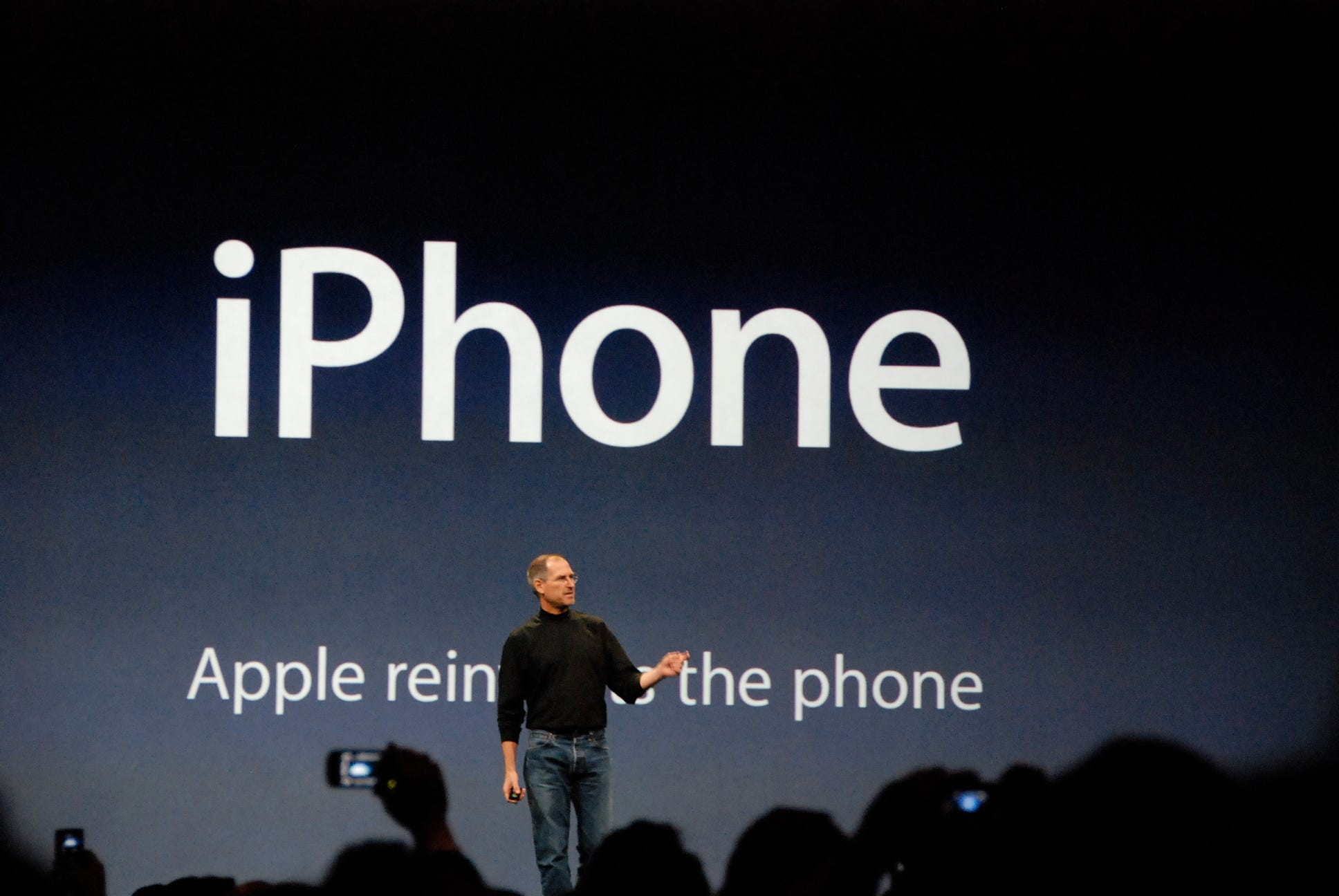This is a sneak peak into one of the products talked about in Nearly Perfect, the iPhone. We printed a limited hardcover run, if you haven’t picked up your copy yet…
Mobile phones solved the problem of making calls, texts, and occasionally entertaining you with a quick pixelated game. People wanted to communicate with their friends and family and be entertained (remember snake?).
The PDA was a device used to organize tasks, manage your calendar, take notes, and keep track of your contacts—without the functionality of a phone.
Apple created a fun-to-use phone that did the job of a mobile phone, a PDA, and a multimedia device to listen to music and watch video. With this and the addition of a mobile web browser, the iPhone was the only product in the world that could access the internet—and act as a phone, PDA, and iPod.
They did this by creating a state-of-the-art touch interface that allowed every individual experience to be customized—what would become well known as the “app”. It was the best, single device that solved all of these problems. Because it was a one-of-a-kind solution, it became first in mind, and in their first year they sold over a million devices (which they would 10X in year two).
Following the invention of the iPhone, we got “apps”, 48 megapixel cameras, completely wireless headphones, and within a few decades, we’d have a device in our pocket more powerful than any desktop computer in the 2000s.
The world’s first mobile phone “The Brick” was released in 1983, followed by the world’s first smartphone in 1992 that could receive a fax. The game “Snake” debuted in Nokia phones in 1997. But no technology changed our culture like the iPhone in 2007.
People wanted a convenient way to call and text, to entertain themselves, and to use the internet to access information and communicate. This wasn’t possible before the iPhone because of (1) unfriendly user interfaces, (2) having to use multiple devices, and (3) it was difficult to use what the internet and consume media content.
Apple improved on the user interface by removing the physical keyboard, which made the UI customizable for any job the phone was hired to complete. They combined existing modules—like the iPod, mobile phone, and PDA—into a single device where you could play music, watch video, make calls, write texts, manage your professional contacts, and send emails. They also shipped a web browser, making it possible to use everything the internet had to offer.
In Steve Jobs’ famous presentation, he stated the main problem with existing smart phones was that “the keyboard was there whether you needed it or not”. From the outside looking in, this may seem like an aesthetic decision tied to a technological innovation. And it was.
The touch interface was the brainchild of first a French engineering group with Jean-Marie Hullot at the helm, it turned into Tony Fadell, Jony Ive and Scott Forstall’s brainchild. But it was more than a fancy way to remove the keyboard and implement a touch interface. It was going to solve the problem of making the phone more easy to use, and release a innovation looking genie out of a bottle that would be impossible to put back.
The touch interface was originally slated for the iPad, but Jobs felt the market wasn’t yet ready for tablet PCs. It was too early. After seeing people carry multiple phones, PDAs, and a iPod he saw an opportunity to combine them into a single device, a mobile phone.
The iPhone didn’t invent the touchscreen, nor did they invent the lithium-ion battery, ARM architected CPUs, or mobile phone networks, but they did improve on the touchscreen in a way that solved the user experience better than anyone. The original iPhone used a capacitive touch style screen, which detected electrical changes based on the touch of a finger. Have you ever tried to use a modern touch device with thick gloves on?
Apple solved this problem by removing the permanent keyboard and opting for a touchscreen instead. This made for a more joyful typing experience, without the confines of plastic buttons or a stylus. It also made it possible to customize the keyboard, like with different languages, without a new physical device. Importantly, it also allowed the interface to adapt to the needs of the user. Making it so only what was needed was on the screen. You don’t need a QWERTY keyboard to use a calculator.
They also combined several existing modules to create a single device. The iPod was hugely successful at the time to carry high-quality audio in your pocket to listen to.
The iPhone is just one product we talk about in Nearly Perfect. We’ll talk about another Apple product in depth (already covered here on the newsletter), and many more. Check out the book if you haven’t already.
You can also follow along on Twitter for more details and stories.








